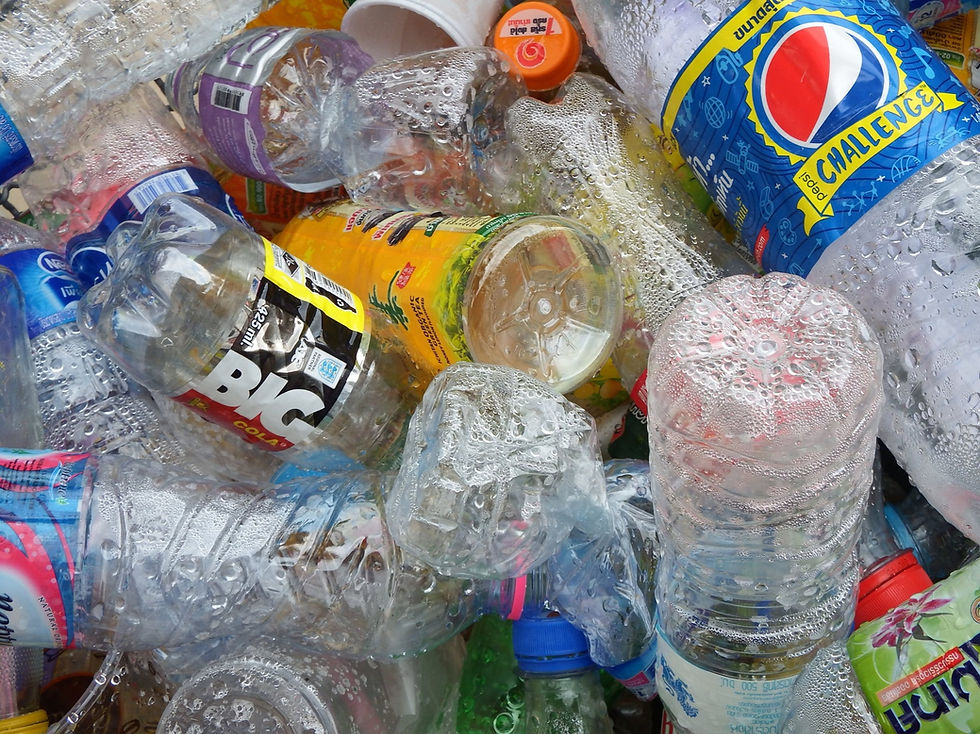Informed Choices: PFAS
- Jamie Langes

- May 2, 2021
- 5 min read
This blog post is the first in a series to help you to understand what certain chemicals are, what they are used for (and in), and how they are impacting the sustainability of this planet. It's all about making those personal choices for sustainability, but I feel many of us are ill-informed and the more we understand, the better we can combat or change our negative directions.
Overall, I want to convey what PFAS are and how they might be negatively affecting you and the planet. Ultimately, I want to help enable you as a consumer to make more informed choices about what you purchase or the companies choose to support to increase sustainability. I'm staring with PFAS because they.are.in.all.humans.right.now. - and they shouldn't be for our long-term health and the viability of this planet.

What are PFAS?
Per- and polyfluorinated substances (PFAS) are a group of over 7,000 man-made (meaning, they are not in any way naturally occurring) chemicals. They were created by American companies right after World War II by researchers looking to craft substances that are oil (grease), water, and heat-resistant. Each PFAS is a long-chain (meaning, many connected) carbon compound; the bonds between the carbon atoms (physically) are very strong. Without the ability of the chain to be "broken" easily by interaction with oil, water or heat, the PFAS can create a barrier (so to speak) to protect the underlying materials (think fabrics, pots / pans, and food wrappers).
PFAS were touted as a "miracle" chemical and used in many applications such as weather-resistant paints or coatings, water-proof (or resistant) fabrics (like couches, carpets, clothes, and shoes), and paper or plastics (for example - food wrapping or packaging which prevent oil or grease from penetrating the paper and coating your hands). As a result, and due to consumer application and demand, more PFAS compounds were created and used for the products you or I can buy and use exponentially through today. There are very limited applications in which PFAS are not utilized in this consumer-based world.
What's the problem?
Because of PFAS attributes, the chemicals do not degrade (meaning, the bonds are not broken between the carbon atoms and diminished over time in water or the environment). This has dubbed PFAS as "Forever Chemicals." We don't know how to remove them from the environment, and an even greater concern? We don't know how to remove them from our bodies. Many years of scientific studies (including those done by the corporations who created these chemicals originally going back 50+ years) have found a very strong correlation (connection) between PFAS and negative impacts to human health such as the following (www.epa.gov/pfas):
low infant birth weights
effects on the immune system
cancer, and
thyroid hormone disruption
PFAS enters the environment largely through water and wastewater treatment processes from primary manufacturers (which is limited and has been banned for PFOA and PFOS in the U.S. entirely) and secondary manufacturing (while primary manufacturing is banned, import and use in the creation of other products is not). It also enters our landfills from disposal of these materials in our general refuse as well as disposal of manufacturing wastes (including sludge - the aggregation of PFAS compounds in a wet "cake" that still needs disposal once the water is largely removed). As a result, PFAS is in our drinking water, groundwater (both shallow and deep), rivers, oceans, lakes, and in our bodies.
So, everyone "agrees,' PFAS are in everything, are everywhere, and are "bad" for us and the planet.

What have we done to "help?"
PFAS chemicals were originally created well before the advent of the Clean Air Act (CAA) and Clean Water Act (CWA) or the Environmental Protection Agency (EPA) by at least 20 years (if not more). That's not uncommon with many chemicals we use and produce in the United States. That said, even 40+ years after the inception of the EPA and widespread regulations have been passed on several other chemical compounds, the Federal EPA has yet to regulate PFAS on a national level.
Environmental regulations work in a hierarchy; the US EPA sets a "base line" standard to which permits are regulated and the level at which human health and the environment is protected is established. These regulations are issued in support and conjunction with the scientific community and corporate research & development (R&D) divisions (often whom have created these chemicals and have no financial interest in limiting their ability to create them, use them, or dispose of them). Individual states as well as local jurisdictions (such as water boards or departments of natural resources) can impose a more strict regulation than the US EPA for those corporations that operate within their boundaries.
Recent attention has been increasingly paid to PFOA and PFOS, which are only 2 specific compounds within the larger overall PFAS family. 12 states (as of this writing) have passed some regulations (meaning levels at which these chemicals can be in the environment without harming human health or environment) to help manage the issue. Again, only as respects to PFOA and PFOS. Federal regulations have been proposed, but have not been successfully passed by Congress; additional state regulations have been proposed but not successfully passed via those individual state representatives either.
What can I do as an individual?
As consumers, we need to select goods, materials, and services which do not include PFAS chemicals. If we want to successfully combat the detriment to humans and environment PFAS has already had, we not only need to find replacement items which do not include PFAS, but we also need to find ways to successfully remediate (clean up) these chemicals from our Earth.
I assume none of us are chemists with the "cure" for PFAS remediation, so individuals must consider their power as consumers to help; here are some examples for your choices:
Eat at home - the less food packaging from fast food, take out, and disposable foams, paper and plastic containers, the less we are promoting creation of these materials to satisfy demand and the less are sent to our landfills. Since many food packaging materials are coated in PFAS, this means less PFAS are used and less are in the waste cycle.
Buy PFAS-free cookware - most (if not all) cookware touted as "non-stick" are coated in PFAS materials. Teflon is the most well-known brand and most consumers are aware that this brand should be avoided if you want PFAS-free cookware. Please note, because PFAS is such a large group of chemicals, the Teflon brand has just been exchanged for a different brand using a different PFAS configuration. Non-stick cookware (if you want to be sure) should be avoided, and for any pots and pans you are purchasing in the future, do your research to ensure it is PFAS-free.
Avoid water-resistant / water-proof clothing (or after market sprays) - I know, you want to stay warm and dry, I get it. But all water-resistant or proof clothing are fabrics coated in PFAS (this includes boots). The after-market sprays (most well-known Scotchgard) are also PFAS. If you buy something that you truly do not want to be "ruined" - check the weather forecast and when in doubt, don't wear it out(side).

This post probably sounds very concerning; and I hope it is! This is the largest global crisis we are facing with pollution today because we are not regulating it, we are not talking about it enough, and we certainly are not prepared as a planet to address the crisis together. BUT, do not be discouraged. You have read this post, hopefully you visited the EPA website, and maybe you have re-considered how your choices for products and actions can make a difference.
If we all make the better choices, change WILL happen.
With love & hope for a better future for us all - Jamie



Comments